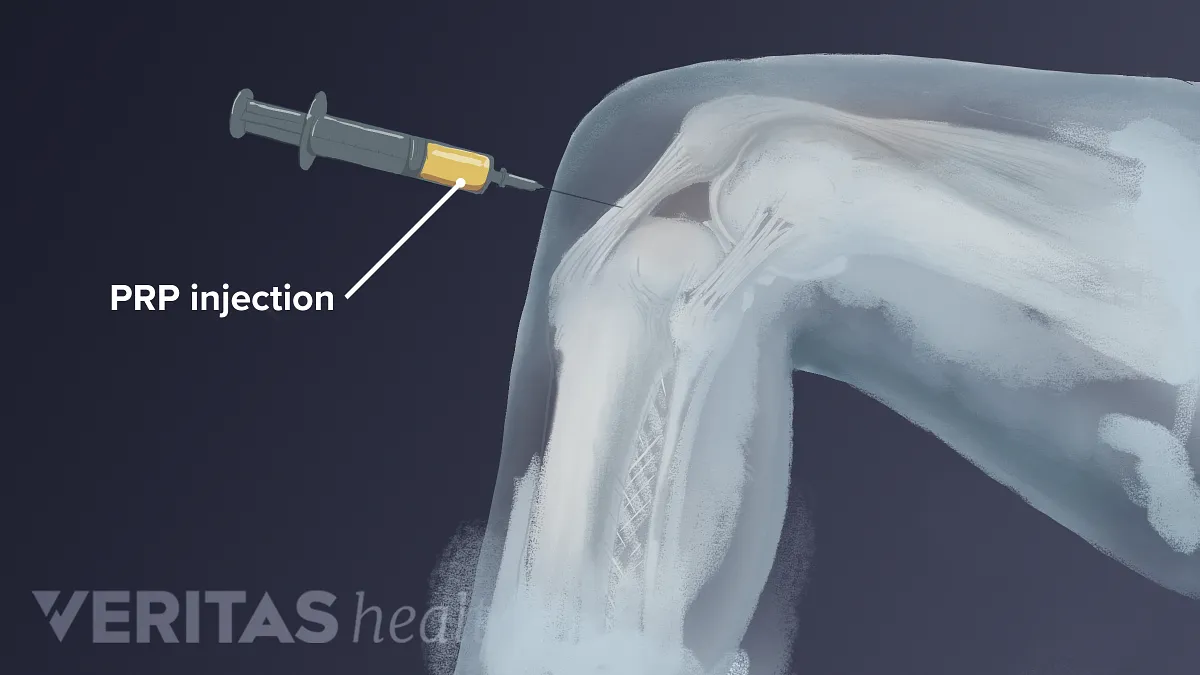Joint discomfort is an incredibly common problem that can have a big influence on an individual's lifestyle. In the past, individuals would need to count on using prescription medications or perhaps surgical treatment to help in reducing the discomfort and pain connected with joint pain. Nevertheless, nowadays, there is a far more natural and effective method to deal with joint discomfort. Platelet Abundant Plasma (PRP) treatment has actually ended up being increasingly popular over the past couple of years and is getting acknowledgment as a viable treatment alternative for joint discomfort. This detailed guide will supply an introduction of PRP treatment and how it can assist deal with joint pain. It will cover everything from how PRP works to the different types of PRP treatments available, as well as the potential benefits and risks associated with this approach of treatment. By the end of this guide, you will have a much better understanding of PRP therapy and how it can be used to successfully deal with joint discomfort.
What is Platelet Abundant Plasma (PRP) Therapy?
PRP treatment is a procedure that includes extracting a sample of blood from the patient, isolating the platelets within the blood, and after that re-injecting the platelets back into the patient's hurt or uncomfortable joint. Essentially, the platelets are what make PRP treatment so efficient. Platelets are naturally occurring blood elements that are rich in growth aspects. Growth aspects are proteins that stimulate cellular regrowth and tissue repair, which is why they are used in numerous different kinds of medical treatments. By drawing out the platelets out of the client's blood sample and re-injecting them back into the patient's hurt joint, they are essentially providing their body with the required proteins required to begin the recovery process. This procedure can help treat a range of different conditions and injuries such
How Does PRP Treatment Work?
When the platelets are extracted from the client's blood sample and re-injected back into the client, they stimulate the recovery process in the client's injured joint. The development elements within the platelets are what are accountable for stimulating this recovery process. Basically, the platelets act as little bio-factories that produce proteins which assist to promote the healing process and accelerate recovery time. As the platelets are re-injected back into the patient's injured joint, they activate the body's own healing procedure and aid to decrease the discomfort and inflammation connected with the injury. They also help to promote a more quick healing procedure, leading to fewer down-time durations and a quicker go back to regular everyday activities. By dealing with joint pain with PRP therapy, you can help reduce joint discomfort, boost movement, and speed up your recovery time.
What are the Advantages of PRP Therapy for Joint Pain?
As PRP therapy is so reliable at minimizing joint discomfort, discomfort, and inflammation, it is the perfect treatment alternative for anyone who is struggling with joint discomfort. PRP therapy is able to minimize the pain and pain related to joint pain by stimulating the body's own healing procedure and naturally speeding up the rate of healing time. PRP therapy is also extremely effective at assisting to increase mobility in the affected joint and lowering the threat of stiffness and swelling. As the body's healing procedure is naturally accelerated, you will likely find that your joint pain subsides a lot more rapidly and you will be able to return to your regular day-to-day activities more quickly than you would if you were to rely on prescription medications. PRP therapy is a a lot more natural and reliable approach to treating joint pain, and is extremely useful due to the fact that it is minimally invasive and does not require any down period.

What are the Different Types of PRP Treatments for Joint Pain?
For each individual, there are different kinds of PRP treatments that can be utilized for dealing with joint discomfort. For instance, if you are struggling with knee pain, you could opt for a PRP injection into your knee joint. This treatment can be utilized to deal with a range of conditions including: arthritis, osteoarthritis, rheumatoid arthritis, joint separation, muscle sprains, and tendonitis. There are also various kinds of PRP injections that can be used to deal with different areas of the body, consisting of the knees, shoulders, elbows, and wrists.
What are the Possible Threats and Adverse Effects of PRP Therapy?
As PRP therapy is a natural and reliable method to treat joint pain and speed up the recovery process, it is incredibly safe and features extremely couple of adverse effects or risks. Basically, PRP therapy is just utilizing the patient's own blood and there are essentially no dangers associated with PRP. Although PRP treatment is extremely safe and efficient, there are some things to be aware of prior to undergoing the treatment. PRP treatment might take a little longer to start working as it is a more natural and slower process than taking medications. It is essential to remember that not everybody will respond to PRP treatment, and it is very important to discuss your choices with your medical professional.
platelet rich plasma treatment for joint painHow to Prepare for PRP Treatment?
Before you arrange a consultation for PRP therapy, it is very important to ensure that it is the best treatment alternative for you. PRP treatment is best fit for people who are suffering from chronic discomfort or pain that is brought on by an injury or a specific condition. For example, if you have been identified with arthritis and experience a great deal of discomfort and discomfort in your knees and joints, PRP therapy could be a great choice for treating your discomfort. PRP treatment is minimally invasive, so there is no need to fret about an invasive or risky surgery. PRP treatment can likewise be utilized to deal with sports injuries and help speed up the recovery process. For PRP treatment, you will require to ensure that you are in good health and that your body has no present health problems or infections. You will likewise require to make sure that you are not taking any blood thinning medications as these can interfere with the effectiveness of PRP therapy.
What to Expect During PRP Therapy?
PRP treatment is a fairly simple procedure that takes very little time to complete. The initial step while doing so is to draw blood from the patient and isolate the platelets from the sample. The blood sample is placed in a centrifuge and spun around to separate out the platelets and blood cells. Then, the platelets are re-injected back into the patient's injured joint and the blood cells are discarded. The entire procedure is extremely safe and painless, and is frequently done as an outpatient procedure in a center or medical professional's workplace. You will just require to be in the center for a couple of hours and you will be able to go home after the procedure and rest as you normally would. Depending on the type of PRP therapy you are receiving, there may be some mild to moderate swelling, however this ought to subside within a couple of days after the treatment.
What to Anticipate After PRP Therapy?
After you have undergone PRP therapy, you will likely observe a nearly instant improvement in your joint discomfort and increased mobility. As the platelets are naturally healing your joint and accelerating the body's natural healing process, you ought to see an enhancement within a few days. It is likely, however, that you will observe the greatest distinction in between PRP therapy and routine medications after about a week. After PRP treatment, it is very important to rest and permit your joint to recover, but you need to be able to go back to your regular daily activities faster than you would after taking a routine pain medication. Among the best features of PRP treatment is that it doesn't require you to take any drugs, so you do not have to worry about prospective adverse effects or long-lasting health concerns.
What are the Costs of PRP Treatment?
The expense of PRP treatment can vary depending on the specific clinic or physician's office where you choose to have actually the treatment performed. PRP therapy is a minimally intrusive treatment that is typically completed as an outpatient procedure and does not need any down time. As such, PRP treatment is typically more affordable than many other treatment alternatives. Depending on the center you go to and what kind of PRP therapy you receive, the expenses of PRP therapy can vary from a few hundred dollars to a few thousand dollars. Keep in mind that PRP treatment is a a lot more natural treatment option that helps to speed up the body's own recovery process and is normally more secure and more affordable than taking prescription medications. As such, it is necessary to do your research study and speak with your medical professional to identify if PRP therapy is the very best treatment choice for you.

This advanced health article is made possible by Joint Repair Clinic of Montana.
Joint Repair Clinic of Montana is a regenerative medicine clinic located in Helena. Joint Repair Clinic of check here Montana provides PRP treatment solutions.
Joint Repair Clinic of Montana
2722 Billings Ave
Helena, MT 59601
(406) 204-5273
https://www.jointrepairmt.com/helena